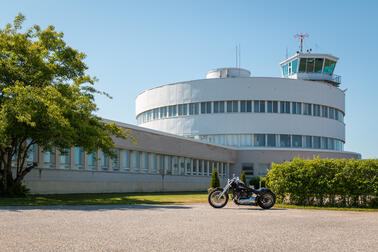
White marble from the Lasa area in Italy is being proposed as the new facade cladding for Finlandia Hall. The material has been found to best meet the requirements set for the facade in terms of aesthetic and technical properties when considered from the perspectives of both building protection and technical durability.
The Buildings and Public Areas Sub-committee of the City of Helsinki Urban Environment Committee will discuss the supplementation of the project plan of Finlandia Hall’s modernisation regarding the facade on 11 June 2020. Otherwise, the project plan was completed in 2019. The project plan also included decisions on construction costs, including the cost of facade material.
The choice of facade material has been prepared for years. Durable marble types and alternative materials, both natural stone and industrially manufactured products, have been surveyed for the facade. In 2018, a test wall was erected on the roof of Finlandia Hall, where a total of eight possible facade materials have been tested. The materials have also been tested in laboratory experiments, for example by accelerating their ageing.
The Lasa Bianco Nuvolato marble, mined from the South Tyrol region, is similar in colour and pattern to the original Carrara marble, so it realises Alvar Aalto’s vision of Finlandia Hall well and the objectives of the protection decision at the same time.
Based on the test results, the lifespan of Lasa marble is estimated to be at least 50 years. The tests did not show Lasa marble to have the bowing effect common to many marble types. In addition to this, there is evidence of the durability of Lasa marble on the facades of reference buildings.
‘Finlandia Hall encapsulates the important themes in Alvar Aalto’s production and is one of his most internationally renowned works. The City of Helsinki has carefully prepared the facade project, and the research has been very thorough. Marble is a key element in the building’s architectural identity and binds together the building’s interior and facades, which form an inseparable architectural ensemble.
From the perspective of building protection, it is especially important and positive that the renovation of the facade can combine both marble and durability,’ says senior architect Sirkkaliisa Jetsonen from the Finnish Heritage Agency.
Facade to be completely renewed
Finlandia Hall’s 11,000 facade panels, their fastenings and the thermal insulation will be renewed. The surface area of the panels is 7,000 m2.
The construction costs calculated based on the project plan are 119 million euros. The facade costs will make up some 12–15% of the overall costs, of which the material costs are less than half.
A monitoring programme has been prepared for the quality assurance of Lasa marble in cooperation with the supplier. The entire production chain of the stone is reliable and traceable, as the stone is mined and the panels manufactured by the same company.
Finlandia Hall will serve throughout the renewal project
Finlandia Hall will continue to be used as a conference and event centre throughout the renewal project.
Finlandia Hall is a heavily used event centre for concerts, conferences, trade fairs, corporate events and celebrations, with about 800 events held annually. During its 50-year history, Finlandia Hall has become the most internationally known conference centre and concert hall in Finland.
Thanks to the renewal project, the building will also receive facilities for new services. For example, an audiovisual exhibition and a design shop are being planned. In order for the restaurant to continue to be able to serve large events and conferences, the kitchen will be modernised.
Thanks to an event space called Little Finlandia, Finlandia Hall will remain open to customers throughout the renewal project. The plans for Little Finlandia have progressed during the spring of 2020, and the City is currently tendering for a contractor for the building.
The main building of Finlandia Hall, completed in 1971, is nearly 50 years old. According to condition examinations, the building is in need of an extensive modernisation. Finlandia Hall will be repaired and restored from top to bottom and renovated from the plumbing to the facade. New services targeted at consumers will be located in the building while observing Alvar Aalto’s legacy and the protection the construction enjoys.
The modernisation will start in early 2022 and take about 2.5 years. The work will be completed and the building taken into use in two phases: the conference wing in spring 2023, and the main building in summer 2024.


